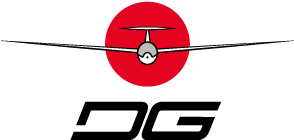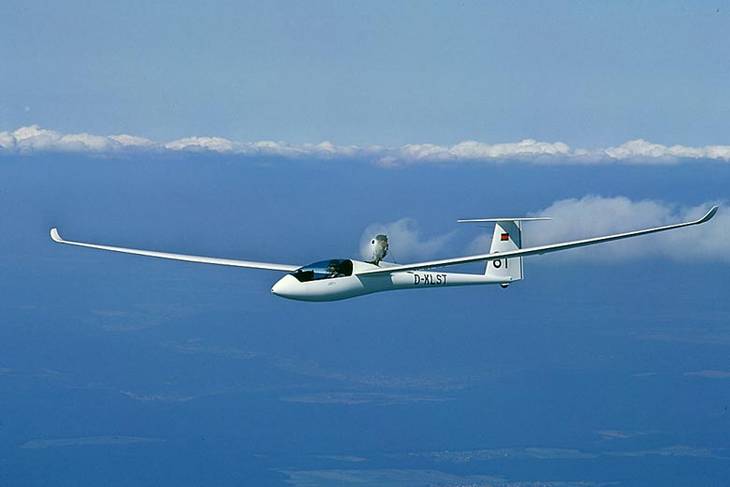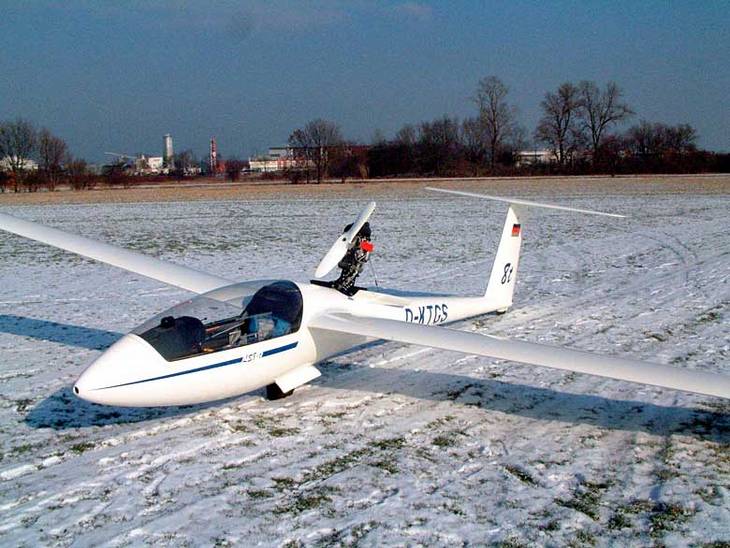Preamble
Since Rolladen-Schneider merged in, I have the luxury of a “media consultant” (Holger Back), and his word is of course the law! ![]()
And he said: Don’t do any comparisons to other explicitly named aircraft anymore. But between two planes which are both part of our product family, that should be allowed, or?
So here is my very personal and subjective comparison:
LS8-t vs. DG-808B
A Subjective Comparison of Two High-Performance Gliders
It took far to long until I finally could use an opportunity to fly my newly acquired glider, the LS8-Turbo. I flew her in her original form, produced by Rolladen-Schneider. My visits in Bruchsal are always so packed, leaving little time for the important things in life. On the other hand, it is a very special treatment to just hop into a glider which had been carefully rigged and neatly placed at the launch position by some “helpful hands”. And the same helpful hands took care of the bug contaminated bird after my return. I had never before received such a wonderful treatment! ![]()
The result of this comparison will probably not surprise you:
Both aircraft are excellent products, leaving a very good impression. I obviously knew this about the DG-808, but it really applies the same way to the LS8.
However, in many details both gliders are different, and the following reflects my personal opinion about these differences.
A look into the LS8 cockpit does not leave a fully positive impression. I’m worried about a collection of sharp-edged levers, which neither look nice nor are placed in the most convenient positions. However, this is the prototype as we received it from Rolladen-Schneider. The new LS8-st coming out of our production will have a numerous improvements in the cockpit.
I like the seatback adjustment in the LS very much; this would make a nice improvement for the DG!
The seating comfort is at least different in both gliders:
The cockpit of the DG-808 is noticeable wider. It provides more room not only for the pilot, but also for things like food, drinking water and other accessories. The placement of all controls on the left side of the cockpit leaves plenty of room for a storage bag on the right side.
In the LS the pilot feels more “fit in”. The cockpit is narrower, but not uncomfortable. Now I know what “competition cockpit” means, at least I had this impression. Since the shoulders are in contact with the fuselage, every air movement is communicated to the pilot, allowing swift reactions.
The fact that the feet are hidden under the tilt instrument panel is a disadvantage in winter or high altitudes, compared to the “solar heating” under the king-size DG-808 canopy. This is just unmatched.
The straight leg position in the LS, not around the panel as in the DG, might be more comfortable for some pilots during long flights. The difference is small, since the LS panel reaches also down to the seat. Everyone has to figure out where he or she is seated more comfortable.
In particular tall pilots will like the LS cockpit, big pilots probably not. I have not tried the LS wearing winter clothing, this might likely cause problems.
In summary, everything boils down to a subjective feeling:
The DG appears to be more “noble”, the LS more “sportive”. If you don’t mind that, for example, the canopy lock mechanism is fully exposed in the LS, that is fine. I personally like the covered solution in the DG better. The same is true for the finish using light colours in the DG cockpit. To me the DG appears to be more perfectly detailed, and the reason for the price difference becomes obvious. However, flying clubs might view this differently.
The LS came quickly off the ground at low speed when Alwin Güntert’s “Thunderbolt” started the tow. The following climb to 3000 ft in only two minutes was smooth and effortless. I was only concerned about the VSI hand…..
And after the release I immersed into the outstanding “LS experience”:
The ship handles very nice. The harmonic controls with low forces, the turning behaviour, everything is high class. This explains the success of this glider. I had the interesting feeling of flying a smaller and lighter airplane compared to the DG-808. The behaviour is similar to the DG-808 in 15m configuration. This is not a critique on the behaviour of the DG-808, which behaves just a bit “different”, more “sovereign”. Also the DG is heavier, due to the self-launching capable engine.
I think I could get used to the LS8.
In the medium speed range this nice handling prevails; it proves that the fame for the LS8 airfoil is justified. With speeds of about 85 to 120 kts and beyond (160 – 220 km/h) however, my left hand searched desperately for the non-existent flap handle. If I were only in a LS10 now….
At high speeds the DG-808 is clearly superior, taking advantage of her flaps. But how many times do you fly that fast?
The thermal conditions above Bruchsal were surprisingly good, the circling effortless, and help from the engine therefore not required. But for completeness, I had to try out the engine. From the viewpoint of a well pampered DG pilot, engine control in the LS8 prototype is horrible. How good that we already changed this for the production model! The procedure will become much easier when the electric spindle actuator replaces the tricky hydraulic system. But it worked for me and after a loss of 150 ft (50 m) the engine was running.
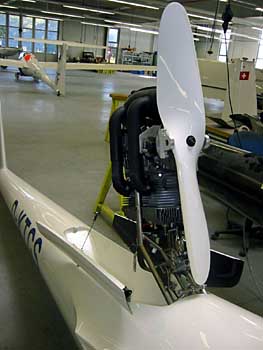
This auxiliary (“Turbo”) engine represents an outstanding design. There are no rattling and very little vibrations, the sound is low and full, and the overall noise level is low. The DG-808C has more vibrations, but there the engine is typically shut down after five minutes, while an auxiliary turbo engine may run for half an hour or more. And then ear protection is really necessary. A short engine run may be sustainable without protection.
I really fell in love with this little engine!
More things to report from this flight:
I shared the airspace with many bugs. When these “friends” settled on my wings, I really missed the integrated bug wipers of the DG-808. Unfortunately the LS8 has not enough space between canopy frame and wing leading edge, so we cannot retrofit the integrated bug wipers.
Forward visibility is limited during landing. Due to the absence of flaps, the nose comes up fairly high during the final flair. Operating the wheel brake with the heals needs some training, on the other hand allows this to hold the glider on the ground without the need to extend the air breaks.
Conclusion:
- Some points which I don’t like can and will be improved.
- The handling characteristics of the LS8 are very nice.
- The turbo engine works surprisingly well; it should be utilized more widely.
Summary:
The LS8 is a nice airplane.
Even a “DG-minded” boss like me will fully stand for it.
And that’s what I liked to tell you….
– friedel weber – 
“Second” First Flight of the LS8s-t
When we took over Rolladen-Schneider, it had already turned out, that the system being responsible for controlling the engine was not ready for use on a daily basis in the LS8s-t.
The hydraulics system was fairly unreliable and susceptible to maintenances, paired with high production costs.
Hence, we decided to install our approved and reliable electrical spindle-drive system and a DEI which was specially developed by a separate company on behalf of DG Flugzeugbau.
The second first flight of the LS 8s-t took place on the 29.1.2005.
Our constructing engineer at DG, wrote the following lines:
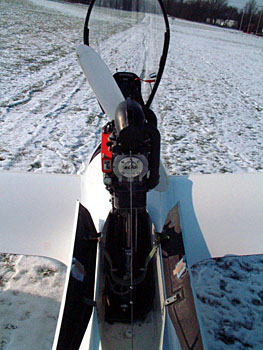
This afternoon, the LS8s-t was airborne for the first time!
Deploying and retracting the engine with the electric drive works very well and within 12 seconds the engine is fully deployed.
Using the decompression valve for the start-up sequence requires very little attention.
In order to get the propeller in motion, 140km/h is needed, resulting in a slight change of AOA/pitch, but as the nose drops slightly it makes the entire procedure extremely convenient.
After closing the decompression valve, the engine ignites promptly and runs like it’s never done anything else.
In the 18 metres wingspan configuration we achieve a rate of climb of more than 1 m/s in 1000m and an outside temperature of -8°C.
Shutting down and retracting the engine is also surprisingly easy and trouble-free.
The quickest way to shut down the engine is to open the decompression valve after switching off the ignition, until the propeller almost stops. As soon as the prop stops rotating, the following steps are all automatical. After trying this out several times, the quickest it took me for the whole retracting cycle from switching off the ignition until the engine bays are closed was just 13 seconds.
Some features of the DEI have not yet worked as planned, but these are only minor problems which will certainly not take long to alter.
Best regards,
Swen
Translation: Justus Schiedek-Jacht
Junior Worker at DG Flugzeugbau
